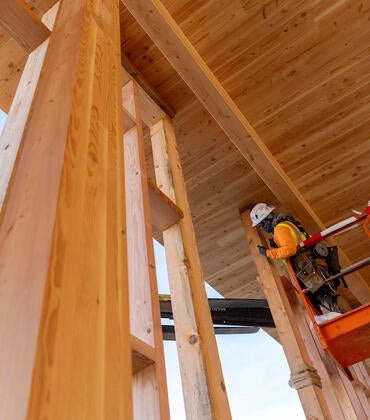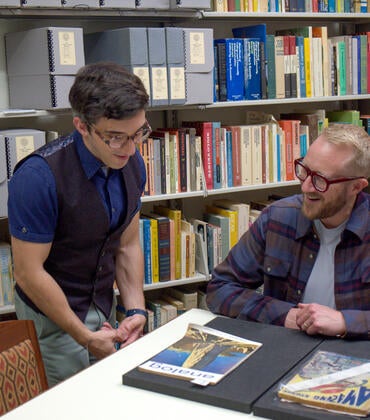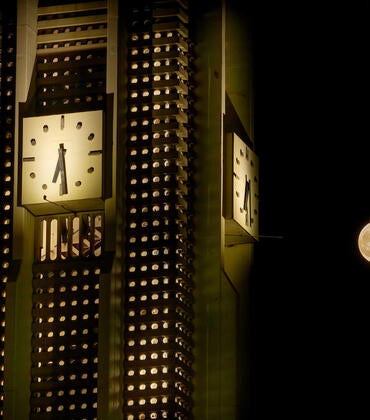For more than five decades, the carillon at the top of the UCR Bell Tower has rung clearly to successive generations of students.
The bells still chime strongly, but the years have added some wear and tear, according to a report by a bell expert who examined the carillon last year. A new maintenance project in March will help restore its luster.
“It’s an important structure on campus — it’s just so long overdue,” UCR campus architect Jacqueline Norman said of the project. “Being able to go in and provide that tender, loving care to something that’s an important part of the campus feels good.”
The carillon is made up of several components responsible for creating its harmonious sound, most importantly 48 bells of different sizes and shapes, ranging from 28 pounds to nearly 5,100 pounds in weight.
Housed in a chamber at the top of the tower, the bells are held up by three levels of wood support beams. The carillon is played with a keyboard of hand and foot pedals, similar to a piano or organ, which connect through vertical wires to transmission pads in the bell chamber. A series of horizontal wires connect from the transmission pads to bell clappers.
“Some of these are a little sluggish,” said David Christensen, UCR’s carillonneur who has played the instrument at least weekly for over 30 years. “They should be coming up faster than that.”
The consultant identified grease buildup in the transmission pads as one of the areas needing maintenance. Grease had also built up around the clappers, causing them to respond slower than they should, the report stated.
Meanwhile, the keyboard had become worn with some foot pads becoming detached and other hand and foot pedals falling loose.
A carillon specialist will handle the maintenance work, which includes cleaning and lubricating the transmission pads and clappers, said Daneca Stevens, a project manager with UCR’s Office of Planning, Design and Construction.
The work also will include adjusting bells and springs where needed and adding oil and varnish to restore the wood pads and pedals, she said. A new electrical control system will be installed as part of the project as well.
Christensen said the maintenance is just what the carillon needs, noting there are similar bells in Europe that are still playing after 200 years of use.
“I think it’s going to make the instrument feel like new when they’re done with it,” he said.



